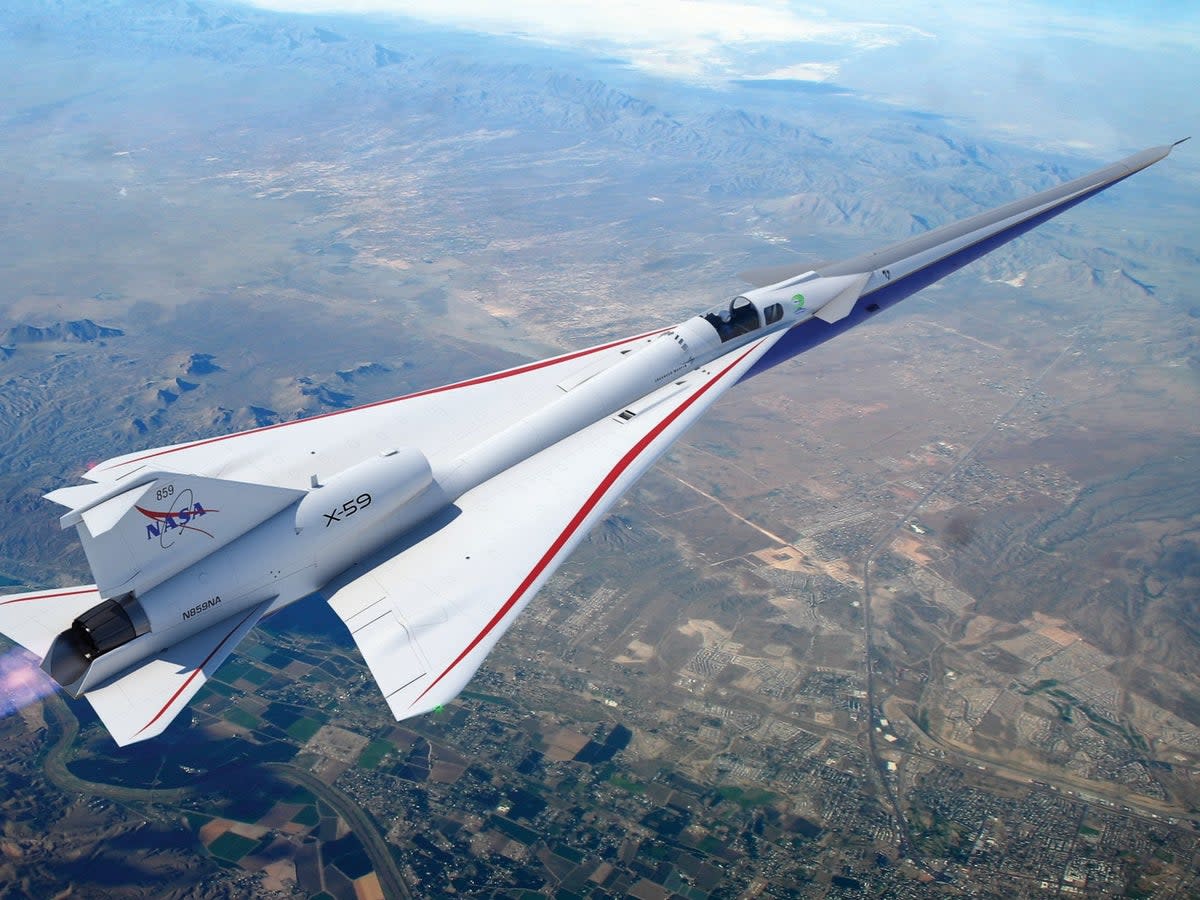Nasa set to break sound barrier for first time without loud sonic boom

Nasa will attempt to break the sound barrier for the first time without making a loud sonic boom, the US space agency has announced.
Seventy-five years after the first ever supersonic flight, Nasa’s Quesst mission aims to eliminate the thunder crack sound made when passing the speed of sound, with the hope that the achievement will usher in “a new era” of high-speed commercial air travel.
“That first supersonic flight was such a tremendous achievement, and now you look at ahow far we’ve come since then,” said Catherine Bahm, an aeronautical engineer at Nasa’s Armstrong Flight Research Center in California. “What we’re doing now is the culmination of so much of their work.”
The sonic boom has stifled the development of supersonic travel, with the US and other countries banning it over land due to the disturbance the sound made on the ground.
Central to Nasa’s plan to dampen the sonic boom is the X-59 aircraft, which is currently being developed by Lockheed Martin as part of the Low Boom Flight Demonstrator project.
In order to lower the intensity of the sonic boom, aeronautic engineers have manipulated the shape of the airplane to soften the noise.
The first flights of the craft are set to take place in 2023, with flights over neighbourhoods aimed at surveying how people react to the quieter sonic “thump” that it produces.
The results will then be shared with regulators, who Nasa hopes will consider lifting the ban on supersonic flight overland.
“We’ve kind of been stuck with our airliners at about Mach 0.8 for the past almost 50 years, so being able to get there – wherever there is – much faster is still kind of an unfulfilled dream,” said Peter Coen, Nasa’s mission integration manager for Quesst.
“With the X-59 flying on the Quesst mission, I think we’re ready to break the sound barrier once again.”

